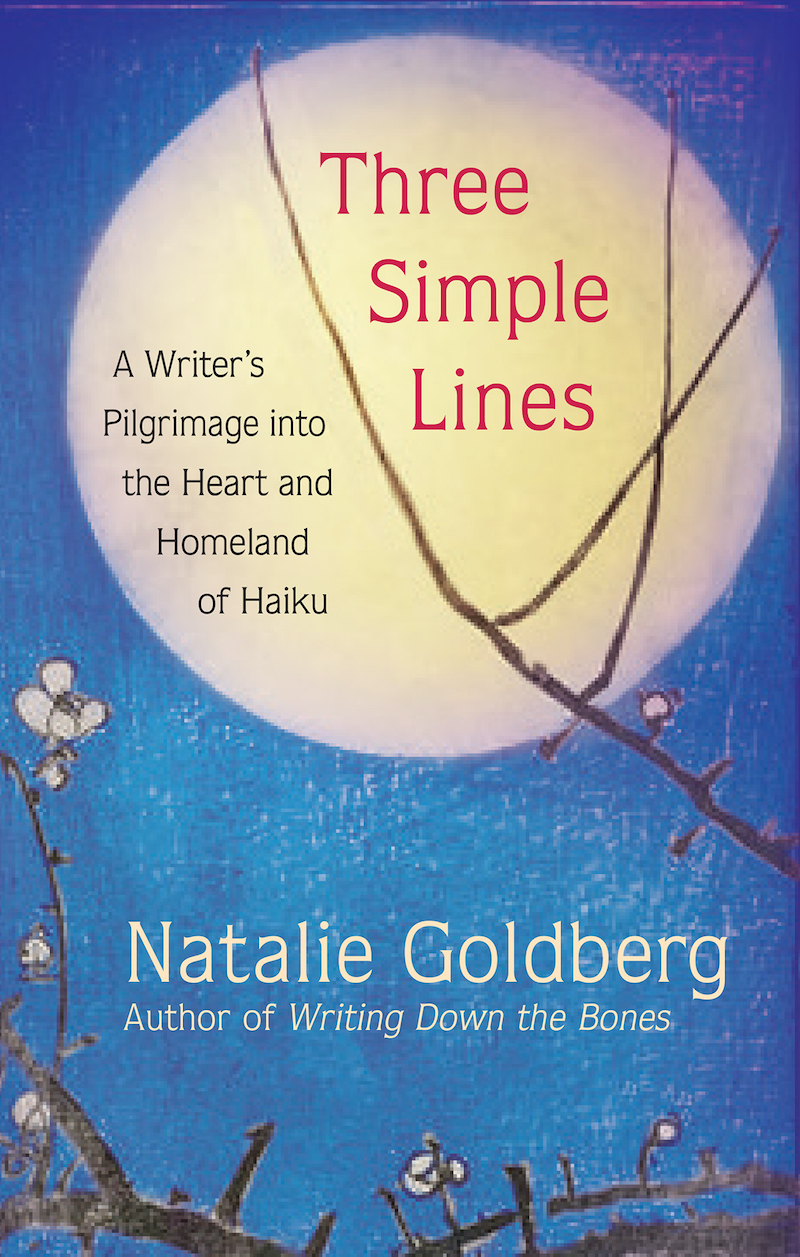
An excerpt from Three Simple Lines: A Writer’s Pilgrimage into the Heart and Homeland of Haiku by Natalie Goldberg
~
Allen Ginsberg, the poet, first introduced me to haiku.
“There are four great Japanese haiku writers,” he declared, holding up a finger for each one as he named them, in front of the class in summer 1976. We were at Naropa Institute in Boulder, Colorado. “Basho, Buson, Issa, and Shiki.”
No women? I thought. Okay, I’d take the boys on and learn what I could from them, sure there were some women hidden in history.
He also told us that the formal five syllables, then seven, then five, often taught in Western schools, does not necessarily work in English. In Japanese each syllable counts. They don’t have the, an, that, those articles of speech, so he encouraged us not to worry about the count if we write or translate haiku. Only make sure the three lines make the mind leap.
“The only real measure of a haiku,” Allen told us that one hot July afternoon, “is upon hearing one, your mind experiences a small sensation of space” — he paused; I leaned in, breathless — “which is nothing less than God.”
Now, in 2012, on the cusp of age sixty-six, I am about to search for a grave near the foothills of Mount Hiei: Buson’s. The eighteenth-century painter and haiku master. Of the four named by Ginsberg, I found Buson to be the least accessible in translation. Only one or two books of his work have been translated into English.
Buson, who was born in 1716, after Basho died, was deeply inspired by him. Buson considered Basho his haiku master.
The temple I plan to visit on the outskirts of Kyoto, where Buson is buried, is also famous for Basho’s hut, though it is not clear if Basho, with his walking stick, actually stopped at that precise place on his wanderings while he circumambulated Mount Hiei, “shading the dust from his eyes” — the Zen way of saying “seeing clearly.”
But when Buson visited the hut years later, the grass room was only a pile of dirt. Buson engaged friends to rebuild it with him. He was a social man, though he, like Basho, had spent time — five years — practicing in Buddhist temples as a lay priest. But he did not seem to have the desire for purification that drove Basho. Buson had a wife and daughter, and in his sixties, through the success of his paintings, was able to own a house in Kyoto.
After rebuilding Basho’s hut, Buson and his friends, as a way to honor Basho’s art, all vowed to meet there without fail twice a year to write haiku together and drink sake.
Before Basho, hokku, which later became the basis for the independent structure of haiku, was the starting verse of renga, a Japanese linked collaborative poetic form of at least two stanzas used for humorous entertainment at parties, to flirt with a courtesan, to display one’s cleverness. Basho took that first verse seriously, connected it to life and death, to a spiritual path, piercing through the blinding activities of daily life in the regimented society of seventeenth-century Japan to express the true muscle of a person’s being.
What is the Way of haiku? Bare attention, no distractions, pure awareness, noticing only what is in the moment. Being connected to seasons, unconnected to self-clinging. And then, out of that, composing your experience in three lines that go beyond logic, that make the mind leap. In the center, a taste of emptiness. A frog, a crow, a turnip — the ordinary right in front of you is the realm of awakening. Pure Zen but not Zen.
~
Excerpted from the book Three Simple Lines. Copyright © 2021 Natalie Goldberg. Reprinted with permission from New World Library.
~






Read 2 comments and reply